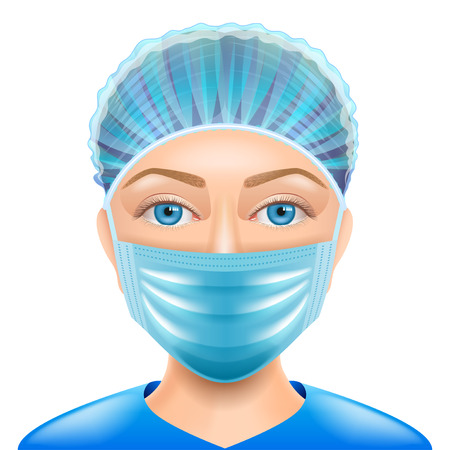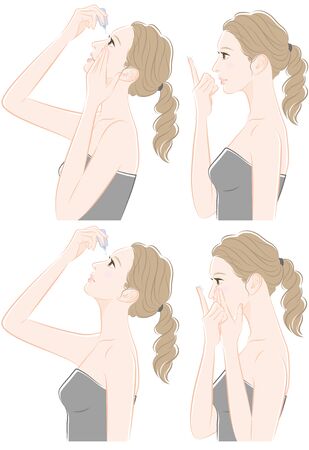1. Understanding Laser Skin Resurfacing
Laser skin resurfacing is a popular cosmetic procedure designed to improve skin texture, reduce fine lines and wrinkles, and address sun damage. It works by using focused light energy to remove damaged skin layers, stimulating collagen production and promoting the growth of new, healthier skin.
How Laser Skin Resurfacing Works
The treatment involves directing concentrated laser beams at targeted areas of the skin. The laser energy removes the outermost layer of skin (epidermis) while heating the underlying dermis to stimulate collagen production. As the treated area heals, new skin forms, resulting in a smoother, more youthful appearance.
Types of Lasers Used in Skin Resurfacing
There are several types of lasers used for skin resurfacing, each offering different benefits depending on the patient’s needs and skin type. The two main categories include ablative and non-ablative lasers.
| Type of Laser | Description | Best For |
|---|---|---|
| Ablative Lasers | Removes the outer layer of skin and heats underlying layers to promote collagen growth. | Deep wrinkles, scars, and significant sun damage. |
| Non-Ablative Lasers | Stimulates collagen production without removing layers of skin, leading to gradual improvements. | Mild wrinkles, early signs of aging, and minimal downtime. |
Ablative Lasers
Ablative lasers, such as CO2 and Erbium lasers, are more intensive and provide dramatic results. These lasers remove layers of damaged skin while encouraging new cell growth. However, they require longer recovery times compared to non-ablative options.
Non-Ablative Lasers
Non-ablative lasers, like fractional laser treatments and intense pulsed light (IPL), work beneath the surface of the skin without causing significant peeling or downtime. These treatments are ideal for individuals looking for gradual improvements with minimal recovery time.
Who Can Benefit from Laser Skin Resurfacing?
This treatment is suitable for individuals looking to reduce fine lines, wrinkles, acne scars, or sun damage. However, those with darker skin tones should consult a specialist to determine the safest laser option for their complexion.
2. How Laser Resurfacing Reduces Fine Lines and Wrinkles
Fine lines and wrinkles are a natural part of aging, but they can also be influenced by sun exposure, lifestyle choices, and environmental factors. Laser skin resurfacing is an effective way to minimize these signs of aging by stimulating collagen production and encouraging the skin’s natural healing process.
How Laser Technology Works
Laser resurfacing treatments use concentrated beams of light to remove damaged skin layers and stimulate new cell growth. This process triggers collagen production, which helps to smooth out fine lines and wrinkles, resulting in a firmer, more youthful complexion.
Benefits of Collagen Stimulation
Collagen is a key protein that keeps skin firm and elastic. As we age, collagen production slows down, leading to the formation of wrinkles. Laser resurfacing helps counteract this by encouraging the body to produce more collagen naturally.
| Benefit | Description |
|---|---|
| Smoother Skin | Laser resurfacing removes old, damaged skin layers, revealing fresher, smoother skin underneath. |
| Tighter Appearance | The boost in collagen production helps tighten loose or sagging areas for a firmer look. |
| Reduced Wrinkle Depth | The treatment minimizes the depth of wrinkles, making them less noticeable over time. |
| Youthful Glow | The regeneration of new cells improves overall skin tone and radiance. |
The Healing Process After Treatment
The recovery period after laser resurfacing varies depending on the type of laser used. Some treatments require only a few days of downtime, while others may take longer for full healing. During this time, it’s essential to keep the skin moisturized and protected from the sun to ensure optimal results.
Caring for Your Skin Post-Treatment
- Avoid Direct Sun Exposure: Protect treated skin with sunscreen and avoid prolonged sun exposure.
- Mild Cleansing: Use gentle cleansers to avoid irritation while your skin heals.
- Stay Hydrated: Drinking plenty of water supports skin regeneration.
- No Harsh Products: Avoid strong exfoliants or retinol-based products until your provider gives the go-ahead.
If youre looking for a non-invasive way to refresh your appearance and reduce fine lines and wrinkles, laser resurfacing offers an effective solution. With its ability to stimulate collagen production and promote smoother skin texture, this treatment helps restore a youthful glow without surgery.

3. Addressing Sun Damage and Hyperpigmentation
Years of sun exposure can leave behind visible signs of damage, including sunspots, uneven skin tone, and hyperpigmentation. Laser skin resurfacing is a powerful solution that helps restore skin clarity by targeting these issues at their source.
How Laser Resurfacing Targets Sun Damage
Laser treatments work by directing concentrated light energy into the skin, breaking down pigmented cells while stimulating collagen production. This process encourages the growth of new, healthier skin that appears brighter and more even in tone.
Common Sun Damage Issues Treated by Laser Resurfacing
| Skin Concern | How Laser Resurfacing Helps |
|---|---|
| Sunspots (Age Spots) | The laser targets excess melanin, gradually fading dark spots for a more uniform complexion. |
| Uneven Skin Tone | The treatment promotes skin cell turnover, reducing blotchiness and discoloration. |
| Hyperpigmentation | Pigmented areas are broken down and replaced with fresh, regenerated skin. |
| Dull Skin from UV Exposure | The laser removes damaged outer layers, revealing a brighter and rejuvenated appearance. |
The Benefits of Laser Resurfacing for Sun-Damaged Skin
- Non-invasive treatment: No need for surgery or extensive downtime.
- Customizable: Different laser settings allow treatments to be tailored to your skin type and concerns.
- Smoother texture: Helps refine rough patches caused by years of UV exposure.
- Younger-looking skin: Stimulates collagen for a firmer, fresher appearance.
What to Expect After Treatment
Your skin may appear slightly red or sensitive after a session, similar to a mild sunburn. Over time, dark spots will lighten as the treated areas heal. Using sunscreen regularly is essential to protect your newly refreshed skin and prevent further damage.
4. What to Expect During and After Treatment
A Step-by-Step Guide to the Procedure
Laser skin resurfacing is a straightforward procedure, but knowing what to expect can help ease any concerns. Here’s a step-by-step breakdown of the process:
During the Procedure
- Preparation: Your provider will cleanse your skin and may apply a numbing cream or local anesthesia for comfort.
- Laser Application: The laser device is carefully applied to the target areas, delivering controlled energy to remove damaged skin layers.
- Sensation: You may feel warmth or a mild snapping sensation as the laser works on your skin.
- Duration: The procedure typically takes 30 minutes to an hour, depending on the treatment area.
Immediate Aftercare
Your skin will be sensitive after treatment, so proper aftercare is essential for optimal healing. Here’s what you should do:
| Aftercare Step | Description |
|---|---|
| Cleansing | Use a gentle cleanser and avoid harsh scrubbing. |
| Moisturizing | Apply a recommended soothing ointment to keep skin hydrated. |
| Avoid Sun Exposure | Protect your skin with sunscreen (SPF 30+) and avoid direct sunlight. |
| No Makeup | Avoid makeup for at least 24-48 hours post-treatment. |
| Pain Management | Mild discomfort can be managed with cold compresses or over-the-counter pain relievers. |
The Healing Process
Your skin will go through several stages of healing after laser resurfacing. Here’s a general timeline:
- First Few Days: Redness, swelling, and mild peeling are common.
- Week 1: Skin begins to scab and flake as new cells regenerate.
- Week 2: Most peeling subsides, revealing smoother skin underneath.
- Weeks 3-4: Skin tone evens out, and improvements become more noticeable.
- Months 1-3: Collagen production increases, enhancing firmness and reducing fine lines over time.
The key to great results is patience and proper care. Following your provider’s post-treatment instructions will help ensure a smooth recovery and long-lasting benefits.
5. Is Laser Skin Resurfacing Right for You?
Laser skin resurfacing can be an effective way to reduce fine lines, wrinkles, and sun damage, but its not a one-size-fits-all solution. Several factors determine whether this treatment is the right choice for you, including your skin type, medical history, and desired results.
Skin Type Considerations
Your skin type plays a significant role in how well laser resurfacing works for you. While many lasers are safe for various skin tones, some types may carry a higher risk of pigmentation changes, especially for those with darker skin tones.
| Skin Type | Best Laser Options | Considerations |
|---|---|---|
| Fair to Light Skin | Ablative and Non-Ablative Lasers (CO2, Erbium) | Lower risk of pigmentation issues |
| Medium Skin Tone | Fractional Lasers, Nd:YAG | Moderate risk of hyperpigmentation; requires careful aftercare |
| Darker Skin Tones | Non-Ablative Lasers (Nd:YAG, Pico lasers) | Higher risk of post-inflammatory hyperpigmentation; milder treatments recommended |
Your Medical History Matters
Certain medical conditions or medications may impact your ability to undergo laser skin resurfacing safely. If you have any of the following conditions, consult with a dermatologist before proceeding:
- Active Acne or Skin Infections: May increase the risk of irritation and complications.
- Keloid Scarring History: Some individuals are prone to excessive scarring after skin injuries.
- Autoimmune Disorders: Conditions like lupus may make healing more difficult.
- Taking Certain Medications: Blood thinners, Accutane, or certain antibiotics can affect recovery.
Your Goals and Expectations
The best candidates for laser skin resurfacing have realistic expectations about what the treatment can achieve. It’s important to understand that while laser treatments can significantly improve fine lines, wrinkles, and sun damage, multiple sessions may be needed for optimal results.
You May Be a Good Candidate If:
- You want to reduce mild to moderate wrinkles and sun spots.
- Your skin has good elasticity and heals well.
- You’re willing to follow post-treatment care instructions carefully.
You Might Need to Consider Other Options If:
- You have deep wrinkles or severe sagging that might require more invasive procedures like facelifts.
- Your lifestyle doesn’t allow downtime for recovery.
- You have an active skin condition that could interfere with healing.
The Next Step: Consultation with a Specialist
If youre considering laser skin resurfacing, scheduling a consultation with a board-certified dermatologist or cosmetic specialist is essential. They will assess your skin type, medical history, and goals to determine if this treatment is right for you and recommend the best laser option for your needs.

